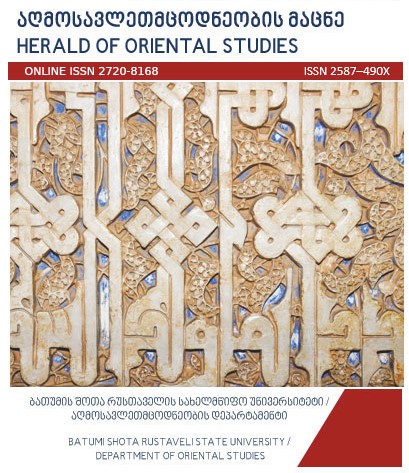„სიკვდილისა“ და„სიცოცხლის“ რეპრეზენტაციის ენობრივი საშუალებები (ქართულსა და თურქულ ენებში)
Linguistic Means for Representation of „Death“ and „Life“ (In Georgian and Turkish Languages)
Author(s): Tsiala LagvilavaSubject(s): Language studies, Foreign languages learning, Theology and Religion, Lexis, Semantics, Cultural Anthropology / Ethnology, Philology, Turkic languages
Published by: ბათუმის შოთა რუსთაველის სახელმწიფო უნივერსიტეტი, ჰუმანიტარული მეცნიერებატა ფაკულტეტის აღმოსავლეთმცოდნეობის დეპარტამენტის „ელექტრონული ჟურნალი“.
Keywords: Phenomenon of Life and Death; Representation; Linguistic Instruments;
Summary/Abstract: The conceptual field of death-life in the cultures under study is the national-cultural manifestations of the universal field the integral semantemes of which are existence and non-existence (the end of existence). The phenomenon of death-life encompasses the entire organic world, which also makes a difference in its nomination, depending on the biological status of the object of death – concerning humans, animals or plants. In interpreting the research concepts, great importance is attached to the linguistic means of its representation. Conceptual meanings are expressed at different linguistic levels: lexical, phraseological and paremiological units. In addition, it is quite common to convey the content of a concept through figures of speech (metaphor, metonymy, synecdoche, personification). Synchronic analysis of the representation of the concepts – “Life” and “Death”, which shows the modern structure of the concept (on dictionaries and discourse materials), is filled with diachronic and comparative excursions based on etymological dictionaries and encyclopedic material.
Journal: საერთაშორისო სამეცნიერო ჟურნალი „აღმოსავლეთმცოდნეობის მაცნე“
- Issue Year: 3/2020
- Issue No: 1
- Page Range: 134-144
- Page Count: 11
- Language: Georgian

